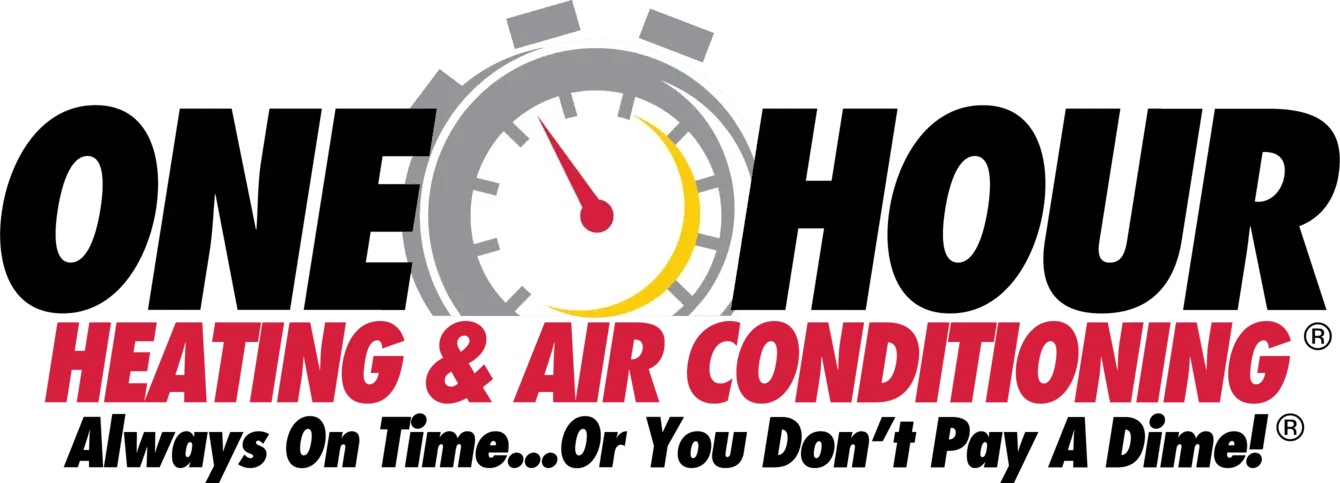Are VRF and VRV Worth It?
Among these, VRF and VRV systems are gaining prominence for their innovative approach to heating and cooling. These systems offer precise temperature control, energy efficiency, and the added benefit of operating quietly, making them a top choice for those looking to upgrade. But with any new technology, the question arises: are VRF and VRV truly worth the investment?
Understanding the benefits of VRF and VRV systems is key to answering this question. These technologies allow for individualized climate control in different zones or rooms, ensuring that each area of a building can be set to its own ideal temperature. This level of customization not only enhances comfort but also contributes to significant energy savings over time. For residents in Lancaster, PA, where weather conditions can vary, this means a more adaptable and responsive HVAC system.
Moreover, the reduced noise level of VRF and VRV systems is a noteworthy advantage. Traditional HVAC units often come with the drawback of loud operational sounds, which can be particularly disruptive in quiet environments. VRF and VRV systems, on the other hand, are designed to work quietly in the background, preserving the peace within your space.
Finally, while the initial setup of VRF and VRV systems may seem daunting, the long-term value they offer cannot be overstated. These systems are not only durable but also designed to meet the specific needs of large or multi-zone buildings, making them an ideal choice for those looking to enhance their property’s comfort and efficiency. As we delve deeper into the benefits of VRF and VRV, it becomes clear that these technologies represent a smart investment for the future of indoor climate control.
Understanding VRF and VRV Technologies
To truly appreciate the value of VRF and VRV systems, it’s essential to grasp how they operate. Unlike traditional HVAC systems that use a single compressor to cool or heat an entire building, VRF and VRV technologies employ multiple small units. This allows them to target specific areas or rooms independently, providing precise temperature control. As a result, users enjoy a customized environment tailored to their personal or business needs, enhancing comfort significantly.
Energy efficiency is another hallmark of VRF and VRV systems, stemming from their innovative design. By adjusting the refrigerant flow based on the demand of each zone, these systems minimize energy waste. This smart use of energy not only aligns with environmental sustainability efforts but also leads to a noticeable reduction in utility bills. For businesses and homeowners in Lancaster, PA, this translates to a greener footprint and more cost-effective climate management.
Noise reduction is a feature of VRF and VRV systems that cannot be overstated. Traditional HVAC systems often generate a considerable amount of noise, which can be intrusive, especially in quiet settings or during the night. In contrast, VRF and VRV systems operate with a whisper-like quietness, ensuring that comfort does not come at the expense of peace. This makes them particularly suitable for environments where noise is a concern, such as hospitals, schools, and residential areas.
Lastly, the adaptability of VRF and VRV systems to different building sizes and types adds to their appeal. Whether it’s a sprawling commercial complex or a multi-zone residential property, these systems can be tailored to meet specific heating and cooling needs. This versatility, combined with their efficiency and quiet operation, underscores the long-term value VRF and VRV offer to property owners looking to invest in a state-of-the-art HVAC solution.
The Benefits of Upgrading to VRF and VRV Systems
Upgrading to VRF and VRV systems brings a wealth of benefits that go beyond simple heating and cooling. These systems are known for their ability to provide consistent indoor climate control, which is crucial in areas with fluctuating temperatures. In Lancaster, PA, where seasons change dramatically, the adaptability of VRF and VRV systems ensures comfort all year round. Their advanced technology allows for a seamless transition between heating and cooling, making them an efficient choice for any setting.
One of the standout features of VRF and VRV systems is their energy-saving capability. By optimizing the refrigerant flow, these systems use only the energy needed for each zone. This smart energy use not only supports environmental sustainability but also enhances the performance of the HVAC system. Residents and businesses in Lancaster, PA, can enjoy a comfortable indoor environment while contributing to a greener planet.
Another significant advantage is the minimal noise produced by VRF and VRV systems. Unlike traditional HVAC units that can disrupt the peace of a home or office, these systems operate quietly. This feature is especially beneficial in settings where noise can be a distraction, such as in schools or healthcare facilities. It ensures that comfort and tranquility go hand in hand, enhancing the overall environment.
Finally, the versatility of VRF and VRV systems makes them a suitable option for various building types and sizes. Whether it’s a small home or a large commercial space, these systems can be customized to meet specific needs. This flexibility, combined with their energy efficiency and quiet operation, makes VRF and VRV systems a smart upgrade for anyone looking to improve their indoor climate control.
How VRF and VRV Enhance Energy Efficiency
VRF and VRV systems stand out for their energy efficiency, a crucial factor for homeowners and businesses in Lancaster, PA. These systems intelligently adjust the flow of refrigerant to match the specific needs of each zone, avoiding the wasteful energy use common in traditional HVAC systems. This precision not only supports environmental goals but also ensures that each room is maintained at its ideal temperature, enhancing comfort without excess energy expenditure.
In addition to their efficient operation, these advanced HVAC systems contribute to a more sustainable environment. By optimizing energy use, they reduce the overall carbon footprint of a building. This is particularly important in today’s world, where there is a growing emphasis on green living and sustainability. Residents and businesses in Lancaster, PA, can take pride in knowing their choice of HVAC system reflects a commitment to environmental stewardship.
The quiet operation of these systems further enhances their appeal. Unlike conventional setups, which can be noisy and disruptive, they work silently in the background. This makes them ideal for settings where noise is a concern, such as libraries, bedrooms, and office spaces, ensuring that comfort does not disturb the peace. Their discreet performance adds to the overall satisfaction of the user experience.
Finally, the flexibility of VRF and VRV systems to adapt to various building sizes and configurations underscores their value. Whether it’s a compact home or a sprawling commercial facility, these systems can be tailored to meet specific heating and cooling needs. This adaptability, combined with their energy efficiency and quiet operation, positions them as a smart choice for anyone looking to upgrade their HVAC solution.
Installation Process and Considerations for VRF and VRV
When considering upgrading to VRF and VRV systems, the installation process is an essential factor to weigh. These systems require skilled technicians for proper setup due to their complex nature. Lancaster, PA, residents can rest assured as local professionals are well-versed in handling these advanced HVAC solutions. This ensures a smooth transition to a more efficient and comfortable indoor climate.
Planning is key to a successful installation of these systems. Before beginning, technicians assess the building’s layout to determine the best configuration for optimal performance. This tailored approach ensures that each zone in your property, whether in Lancaster, PA, or elsewhere, receives precise temperature control. It’s this customization that truly sets them apart from traditional systems.
The versatility of these HVAC solutions also allows for minimal disruption during installation. Unlike conventional systems that might require significant modifications, they can often be integrated with existing infrastructure. This adaptability makes them an attractive option for those looking to upgrade without the hassle of a complete overhaul. Their design offers convenience as well as functionality.
Lastly, it’s important to consider the long-term benefits of investing in VRF and VRV technology. Once installed, users enjoy not only enhanced comfort and efficiency but also the peace of mind that comes from a reliable, state-of-the-art HVAC solution. The initial effort and planning put into the installation process pay off in the form of a superior indoor environment for years to come.
Comparing the Costs: VRF and VRV vs. Traditional HVAC
When evaluating the merits of upgrading to VRF and VRV systems compared to sticking with traditional HVAC solutions, several factors come into play. One significant advantage of VRF and VRV systems is their superior energy efficiency. These systems adjust their output based on real-time demands, ensuring that no energy is wasted. This smart operation leads to a more sustainable environment, a priority for many homeowners and businesses in Lancaster, PA.
Another aspect to consider is the level of comfort provided by VRF and VRV systems. Thanks to their ability to control temperatures in individual zones, these systems offer unmatched personal comfort. Whether in a bustling office in Lancaster, PA, or a cozy home, users can enjoy a tailored indoor climate. This personalized approach to heating and cooling is something traditional HVAC systems simply cannot match.
The noise level is also a critical factor in the comparison. VRF and VRV systems operate much more quietly than traditional HVAC units, making them ideal for environments where noise is a concern. This feature ensures that whether you’re in a classroom or trying to get a good night’s sleep, the peace of your space remains undisturbed.
Finally, the flexibility and adaptability of VRF and VRV systems stand out. They can be designed to fit the specific needs of any building, regardless of size or structure. This makes VRF and VRV systems a versatile choice for any setting, providing efficient and effective climate control that traditional HVAC systems struggle to offer.
Case Studies: Success Stories with VRF and VRV
In Lancaster, PA, a commercial complex recently transitioned to VRF and VRV systems, showcasing remarkable improvements in energy efficiency and climate control. The complex, previously reliant on outdated HVAC technology, now benefits from tailored temperature settings across various zones. This upgrade has not only enhanced comfort for occupants but also contributed to a significant reduction in energy usage, aligning with the complex’s sustainability goals.
Another success story comes from a multi-residential building in Lancaster, PA, where the installation of VRF and VRV systems has transformed the living experience. Residents now enjoy individualized climate control in their apartments, a feature that was impossible with the old centralized system. The quiet operation of the new systems has further elevated the quality of life, eliminating the noise disturbances previously experienced.
Schools in the region have also seen positive outcomes from adopting VRF and VRV technologies. One particular institution reported a notable improvement in the learning environment, attributing this to the consistent and quiet climate control provided by the new systems. The ability to adjust temperatures in different classrooms has allowed for a more conducive learning atmosphere, appreciated by both students and staff.
Lastly, a healthcare facility in the area highlights the critical role of VRF and VRV systems in creating comfortable environments for patients and workers. The precise temperature control and reduced noise levels have significantly improved the facility’s overall ambiance. This change is particularly beneficial in healthcare settings, where comfort and tranquility are paramount for patient recovery and staff performance.
Maintenance and Longevity of VRF and VRV Systems
Understanding the maintenance and longevity of VRF and VRV systems is crucial for those in Lancaster, PA, considering these advanced HVAC solutions. These systems are designed for durability, often outlasting traditional HVAC units due to their sophisticated technology. Regular maintenance ensures they operate efficiently, keeping indoor climates comfortable without interruption. This commitment to upkeep is a testament to their long-term value and reliability.
In Lancaster, PA, the adaptability of VRF and VRV systems to various settings further underscores their appeal. Maintenance routines for these systems are tailored to the specific needs of each installation, whether in commercial complexes or residential homes. This personalized approach not only extends the lifespan of the systems but also maximizes their performance. As a result, users enjoy a consistently comfortable environment year-round.
The technology behind VRF and VRV systems also allows for early detection of potential issues, preventing major breakdowns. Through sophisticated diagnostics, technicians can identify and address minor concerns before they escalate. This proactive maintenance strategy minimizes downtime and ensures the systems remain in peak condition. It’s a key factor in the long-term satisfaction of users across different settings.
Lastly, the environmental impact of VRF and VRV systems is minimized through their efficient operation and longevity. By reducing the need for frequent replacements, these systems contribute to less waste and a lower carbon footprint. For residents and businesses in Lancaster PA, choosing VRF and VRV means investing in a sustainable future. Their durability and efficient performance make them a smart choice for anyone looking to upgrade their HVAC system.
Overcoming Challenges with VRF and VRV Installation
While upgrading to VRF and VRV systems presents numerous benefits, it’s not without its challenges. In Lancaster, PA, space constraints in older buildings can make the installation of these modern systems complex. However, skilled technicians can creatively address these issues, ensuring that even in buildings with limited space, the advantages of VRF and VRV technology are not out of reach. This adaptability highlights the system’s versatility and the expertise of professionals in overcoming physical limitations.
In Lancaster, PA, the complexity of integrating VRF and VRV systems with existing infrastructure is another hurdle. Yet, this challenge is met with innovative solutions that allow for seamless integration without compromising the building’s structural integrity. Technicians employ advanced techniques to ensure that the new systems work in harmony with the old, enhancing efficiency and comfort without extensive modifications.
Another consideration is the need for specialized knowledge to install and maintain VRF and VRV systems. The technology behind these systems is advanced, requiring technicians with specific training and experience. Fortunately, the HVAC industry has responded by offering comprehensive training programs that equip professionals with the necessary skills to install and maintain these systems effectively, ensuring reliable performance.
Lastly, while the initial process of upgrading to VRF and VRV systems may seem daunting, the long-term benefits far outweigh the initial challenges. With their energy efficiency, precise temperature control, and quiet operation, these systems offer a significant improvement over traditional HVAC solutions. Homeowners and businesses in Lancaster, PA, can look forward to enjoying a more comfortable and sustainable environment, thanks to the successful overcoming of installation challenges.
Frequently Asked Questions
What are VRF and VRV systems?
VRF and VRV systems are advanced HVAC technologies that offer precise temperature control across multiple zones. They operate quietly, making them ideal for both residential and commercial settings. By optimizing energy use, these systems ensure efficient heating and cooling. Their adaptability and efficiency make them a smart choice for enhancing indoor comfort.
How do VRF and VRV systems work?
VRF and VRV systems adjust cooling and heating by monitoring the needs of each zone. They use refrigerant as their cooling and heating medium, which flows to different indoor units. This allows for precise temperature control in various areas, enhancing comfort and efficiency. Their design also minimizes energy use, making them a smart choice for large or multi-zone buildings.
Are VRF and VRV cost-effective?
VRF and VRV systems are indeed cost-effective in the long run. They save energy by efficiently managing different zones, reducing utility bills. Their precise temperature control also means less wear and tear, extending the system’s life. For large or multi-zone buildings, the investment in VRF and VRV technologies pays off through improved comfort and efficiency.
What are the benefits of VRF and VRV?
VRF and VRV systems offer unmatched temperature precision, making them ideal for maintaining comfort in every room. They operate quietly, ensuring a peaceful environment in both homes and offices. With their energy-efficient design, these systems significantly reduce energy usage. Additionally, their ability to control multiple zones from a single unit enhances overall efficiency and comfort.
Can VRF and VRV reduce energy bills?
Yes, VRF and VRV systems can significantly lower energy consumption. By adjusting to the precise needs of each zone, they avoid the waste common with traditional systems. This smart use of energy leads to noticeable reductions in utility bills. For those seeking efficiency and comfort, VRF and VRV technologies offer a compelling solution.















